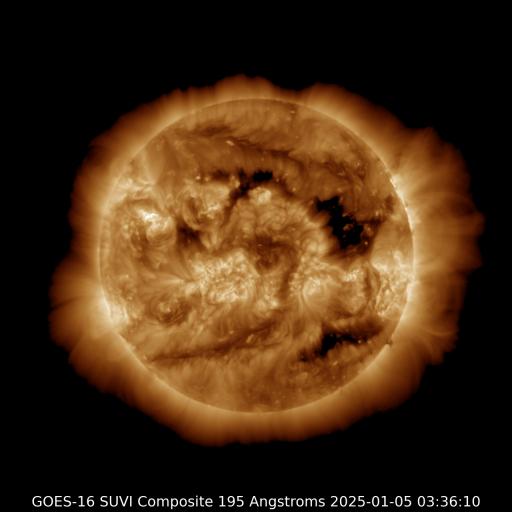Viewing archive of Tuesday, 20 June 2023
Daily bulletin on solar and geomagnetic activity from the SIDC
Issued: 2023 Jun 20 1231 UTC
SIDC Forecast
Solar flares
M-class flares expected (probability >=50%)
Geomagnetism
Quiet (A<20 and K<4)
Solar protons
Quiet
| 10cm flux | Ap | |
|---|---|---|
| 20 Jun 2023 | 171 | 011 |
| 21 Jun 2023 | 173 | 010 |
| 22 Jun 2023 | 178 | 004 |
Solar Active Regions and flaring
Solar flaring activity was moderate during the last 24 hours. Two M1 flares were detected, the first yesterday 12:14 UT from NOAA Active Region (AR) 3341 (magnetic type Beta) and the second picked today at 11:25 UT from NOAA AR 3342 (magnetic type Beta, Catania group 35). Numerous C-class flares were also produced, mainly from NOAA AR 3335 (magnetic type Beta, Catania group 33), 3340 (magnetic type Beta, Catania group 38), 3341, and 3342 in the last 24 hours. Further isolated M-class flaring activity is likely in the next 24 hours, mostly from NOAA AR 3341, 3342, the group of NOAA AR 3335 and 3336, or a yet- unnamed AR at S15E90.
Coronal mass ejections
No Earth-directed Coronal Mass Ejections (CME) were observed in the last 24 hours.
Solar wind
The Solar Wind (SW) conditions were typical of the slow SW regime and stable during the last 24 hours. The SW speed ranged between 390 and 500 km/s in the last 24 hours. The total interplanetary magnetic field (Bt) varied between 4 and 8 nT and its North-South component (Bz) ranged between -6 and 6 nT. The interplanetary magnetic field phi angle was predominately directed towards the Sun during the past 24 hours. The SW conditions are likely to register the arrival of a small High Speed Stream (HSS) in the next 24 hours.
Geomagnetism
Geomagnetic conditions were moderate to quiet globally (NOAA Kp 2- to 3) and active to quiet locally (K BEL 2 to 4) during the past 24 hours. They are expected to be at moderate to quiet levels both globally and locally for the next 24 hours.
Proton flux levels
The greater than 10 MeV proton flux was at nominal levels over the past 24 hours and is expected to remain so for the next 24 hours.
Electron fluxes at geostationary orbit
The greater than 2 MeV electron flux was marginally above the 1000 pfu threshold yesterday between 12:45 and 19:00 UT. It has remained below this level since and it is expected to increase again during the next 24 hours, but probably not much above the threshold level and only for a short period. The 24-hour electron fluence was at moderate levels during the last 24 hours and is expected to drop to nominal levels at some point in the next 24 hours.
Today's estimated international sunspot number (ISN): 208, based on 21 stations.
Solar indices for 19 Jun 2023
| Wolf number Catania | 220 |
| 10cm solar flux | 169 |
| AK Chambon La Forêt | 022 |
| AK Wingst | 014 |
| Estimated Ap | 013 |
| Estimated international sunspot number | 180 - Based on 27 stations |
Noticeable events summary
| Day | Begin | Max | End | Loc | Strength | OP | 10cm | Catania/NOAA | Radio burst types |
|---|---|---|---|---|---|---|---|---|---|
| 19 | 1206 | 1214 | 1218 | S13E79 | M1.1 | SF | --/3341 | III/2II/2 |
Provided by the Solar Influences Data analysis Center© - SIDC - Processed by SpaceWeatherLive
All times in UTC
Current data suggests there is a slight possibility for aurora to appear at the following high latitude regions in the near future
Gillam, MB, Iqaluit, NUNuuk
Reykjavik
Latest news
Latest forum messages
Support SpaceWeatherLive.com!
A lot of people come to SpaceWeatherLive to follow the Sun's activity or if there is aurora to be seen, but with more traffic comes higher server costs. Consider a donation if you enjoy SpaceWeatherLive so we can keep the website online!

Latest alerts
00:55 UTC - Coronal hole
A southern hemisphere coronal hole is facing Earth. Enhanced solar wind could arrive in ~3 days
Monday, 7 April 2025
20:45 UTC - Geomagnetic activity
Active geomagnetic conditions (Kp4) Threshold Reached: 20:39 UTC
17:33 UTC - Hemispheric Power Index
The OVATION model predicts the Hemispheric Power Index to reach 51GW at 18:18 UTC
Space weather facts
| Last X-flare | 2025/03/28 | X1.1 |
| Last M-flare | 2025/04/05 | M1.0 |
| Last geomagnetic storm | 2025/04/06 | Kp5 (G1) |
| Spotless days | |
|---|---|
| Last spotless day | 2022/06/08 |
| Monthly mean Sunspot Number | |
|---|---|
| March 2025 | 134.2 -20.4 |
| April 2025 | 148.7 +14.5 |
| Last 30 days | 134.1 -5.6 |




